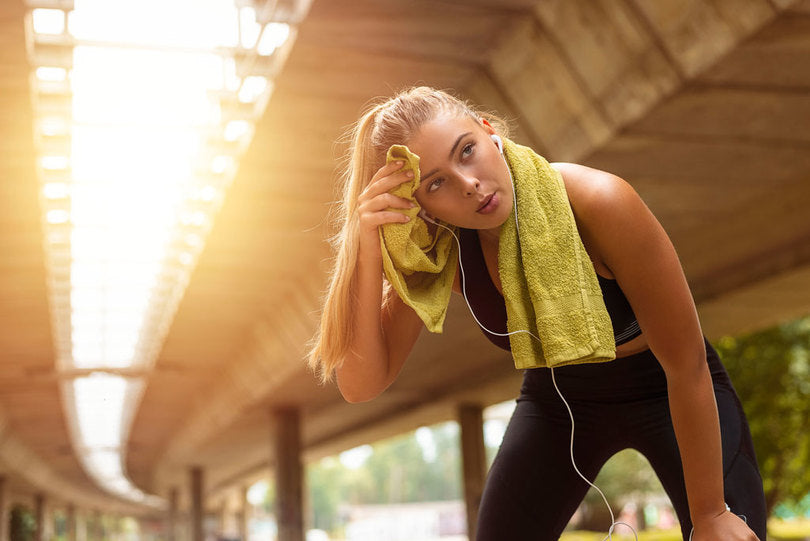Signs You Might Be Wearing the Wrong Shoes


Did you know that lots of foot issues can actually be traced back to wearing shoes that don’t fit properly? Our feet have so many small bones and ligaments to help keep us moving and balanced, so they need a little bit of TLC.
If your feet are feeling or looking a bit worse for wear, it could be a sign that your shoes are not right for your needs. Keep an eye out for these hints that your feet are suffering in the wrong shoes.
Toenail bruising
Have you ever stepped off the treadmill with a sore toe, then watched in horror as your toenail turned dark in colour? Yep, that’s toenail bruising. Often called jogger’s toe, it can be a sign that the toe box of your sneakers is too small. This puts pressure on your toes, which may lead to pain or to discolouring of the toenail.
You should always be able to freely wiggle your toes when your sneakers are on. When trying on sneakers, remember that you need a little bit of space between your toe and the start of the shoe. Feet swell during the day, not to mention that different types of socks can also slightly change the fit of the shoe.
Blisters
I’m sure we’ve all experienced blisters before. Blisters from your sneakers may be an indication they are too tight or too narrow in places. Your sneakers are designed to provide support to your foot and ankle, while still allowing for a full range of motion. The fit is so important to protect and support you, so they really need to be comfortable.
Sneakers that have been laced too tightly can also cause the shoe to rub, which may lead to blisters. Test out different lacing techniques to find a comfortable fit for your foot.
Heel Pain
If your heels are aching or painful to walk on, give your sneakers a good look-over. Wearing the wrong shoe, or a shoe that has most of the padding worn out can lead to heel pain. Think about the way your foot moves when you exercise: your heel makes contact with the ground constantly. With no padding to reduce the impact, your heel can start to show signs of stress.
Once the padding has worn down, it is time to replace the sneakers. If your heel is still feeling tender even after switching to new shoes, visit your healthcare professional to rule out any injury concerns.
Uneven wear
The way the heels of your shoes wear down is a sign of the way your foot moves when you walk or run. Shoes that are worn down more on one heel can be a warning sign of a problem with your gait pattern or the way your foot hits the ground. A sneaker that supports your foot structure can help you manage some movement problems so long as it fits correctly. It’s a good idea to have a shoe fitting regularly as well, as our feet can change as we age.
If your ankle rolls in (or ‘pronates’, which is quite common) excessively, then the rest of your body may attempt to compensate for that imbalance. In the long term, an imbalance may even lead to tension and pain in the foot, hip or lower back.
So girls, hopefully this helps you to understand why wearing the right shoes is really important when you’re working out. It’s more than trying to avoid an injury or a sore toe. You want to avoid long-term problems with your feet, so take care of them!
Love, Kayla xx
* Disclaimer: This blog post is not intended to replace the advice of a medical professional. The above information should not be used to diagnose, treat, or prevent any disease or medical condition. Please consult your doctor before making any changes to your diet, sleep methods, daily activity, or fitness routine. Sweat assumes no responsibility for any personal injury or damage sustained by any recommendations, opinions, or advice given in this article.







<#= c.user.username #><#= moment(c.created_at * 1000).fromNow() #>
<#= c.html_body #> <# if (c.images) { #>
<# } #>